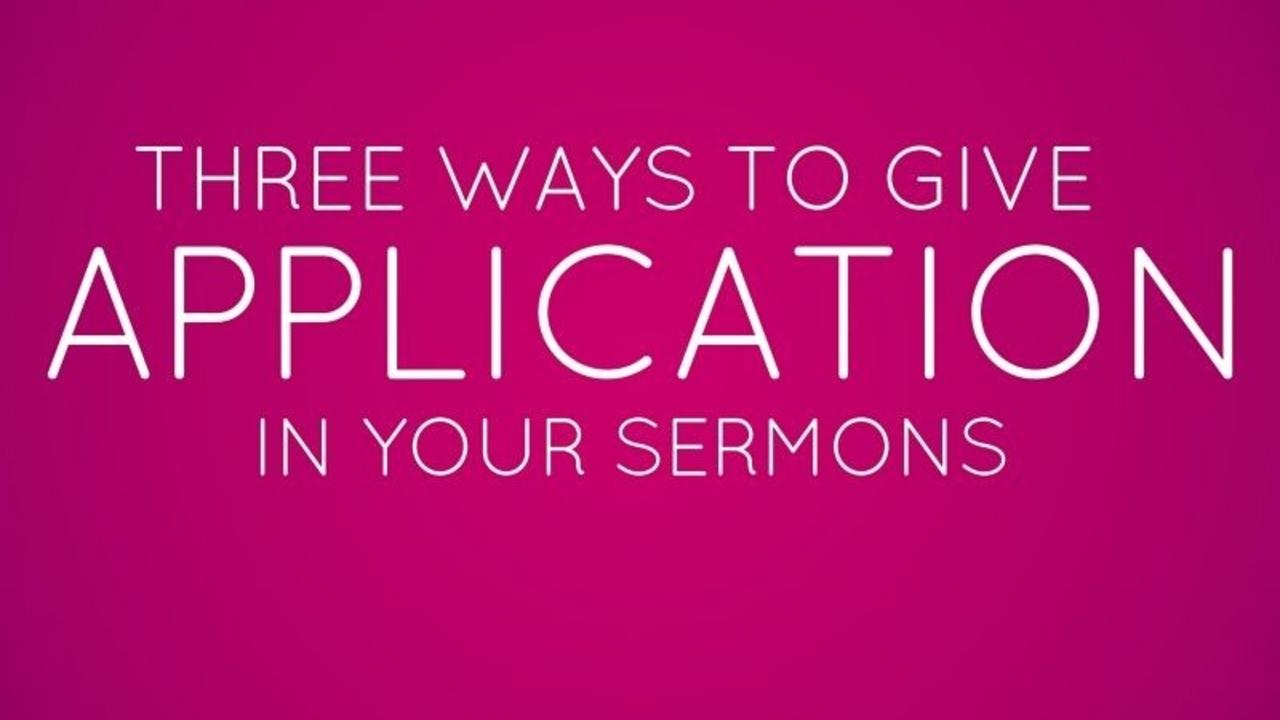3 Ways to Give Application in Your Sermons

One of your jobs as a preacher is to teach your listeners how to live out the truths you preach from Scripture. If your goal is simply to educate or inform your audience so they can be more knowledgeable, then stop preaching. Preaching, of necessity, requires application. We’re preaching for life-change. We’re preaching to make the written word become the living word in people’s daily lives.
But the application part of the sermon is often the most difficult to execute well. I once listened to a sermon where the preacher concluded with a list of 13 ways to apply the message. Thirteen ways! Most people struggle to remember thirteen different truths from one sermon, much less apply them. He was well-meaning, but the buckshot approach just doesn’t work.
With that said, drilling down on just one application seems too narrow. You have a varied audience with varied needs. The text has one meaning, and hopefully your message can be summed up in one big idea, but the way the text can be applied to someone’s life is innumerable. You can’t list every possible way it could be applied, but you want to get your listeners to see for themselves how it applies to their situation.
I’ve discovered that it’s often best to simplify it in my mind. When I unnecessarily make the process of teaching application too complicated it tends to be unhelpful. So, I’ve simplified it down to three categories of how I give application. Keep in mind, these are just categories. There is a lot of freedom within each one, but I like to have the basic framework. I want to share them with you. Here are 3 ways to give application in your sermons:
1. Ask a Question. Application does not always have to be a “to-do.” Sometimes application can be a “to think.” In other words, your sermon may be the catalyst to get someone to question the way they’ve been living, their worldview, or their daily practice of walking with God. Asking a question is a great way to get your listeners to do some introspection. To look inside themselves and see what they find.
For example, if you preach a sermon on obedience to God’s Word. Your question could be, “What’s one thing in your life that is keeping you from obeying God?”
2. Extend a Challenge. Some sermons more naturally call for a specific challenge. You have different listeners with different personalities. Some people like to be called out and challenged. Lovingly, of course. But some people are saying, “Hey, step on my toes! It’s what I need in order to take action!” When I’m preparing I try to ask myself what, if any, challenge could be extended in the sermon. If it flows naturally, I’ll do it.
Say you preach on the importance of giving regularly. Your challenge could be, “Give something. Get started. Try it for three months and see how God is faithful to you.”
3. Give Examples. This is my most commonly used method. The beauty of this approach is that it can be done throughout the entire sermon. I never wait to the end to give examples of how the message could be applied. Instead, in the introduction I build tension by giving examples that touch on as many different types of situations as possible. Then, in every point and during the conclusion, I apply the message to more examples. So this doesn’t come across as a list, but a natural flow from point to application to illustration and back.
How do you give examples? Use your preaching team during your preparation to think of how your message will land on as many different people as possible. In your message, describe people’s situations to them as if you completely understand where they’re coming from and what they’re going through. Here’s some examples:
You’re here today and you’re wrecked with guilt from what you did last night. Draw near to God today.
You’ve never made a habit of giving, and you’re hesitant to get started. What if today were the day you decided to trust God in this way?
You’re married, but you have someone at work that you find yourself attracted to more and more. You haven’t crossed the physical barrier, but emotionally you are connected. Give that to God today and make yourself accountable to a friend before you go to work tomorrow.
When giving examples it does not matter that they don’t apply to everyone. They don’t have to. They will likely apply to someone, and if they’re varied enough, they’ll hit close to home with others even if they don’t describe their exact situation. The point of giving examples is to get people to think about their lives and how they need to respond in some way to your message.
I’ve written a book that describes in-depth how all of these principles come together. It’s called Preaching Killer Sermons: How to Create and Deliver Messages that Captivate and Inspire. Check it out and discover more ways to sharpen the impact of your messages.
What are some of the ways you give application?


